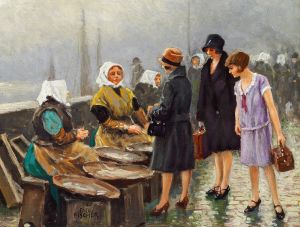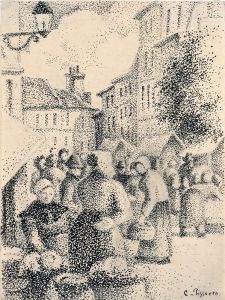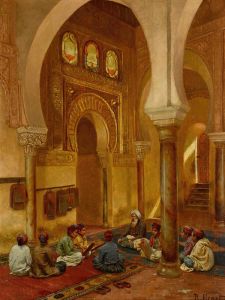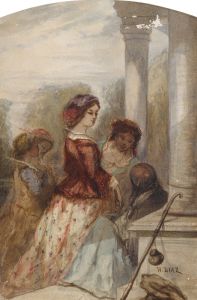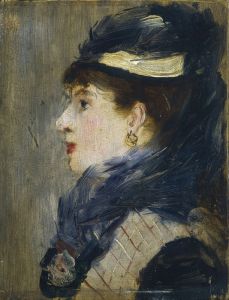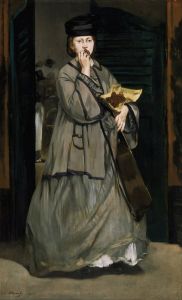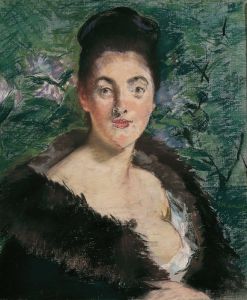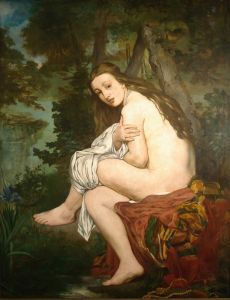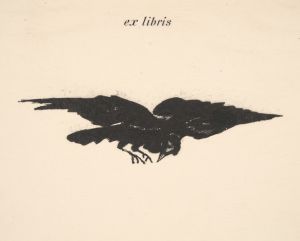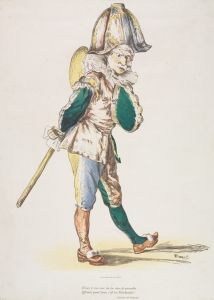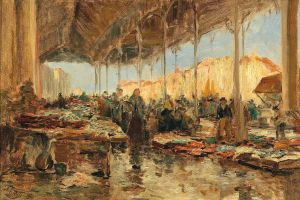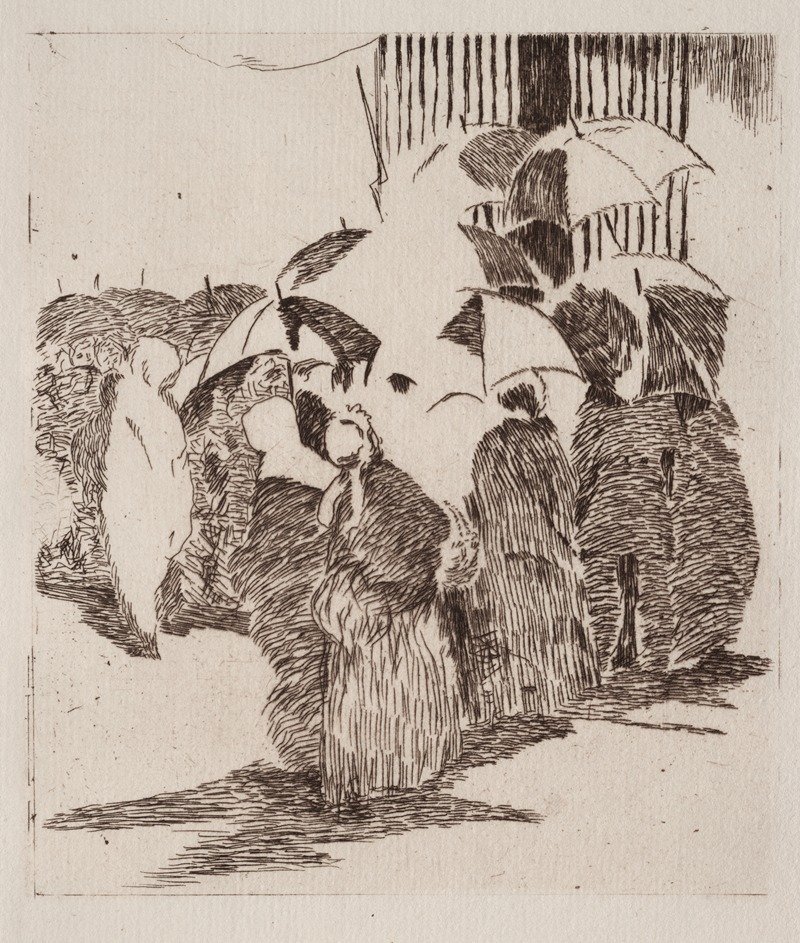
Line in Front of the Butcher Shop
A hand-painted replica of Édouard Manet’s masterpiece Line in Front of the Butcher Shop, meticulously crafted by professional artists to capture the true essence of the original. Each piece is created with museum-quality canvas and rare mineral pigments, carefully painted by experienced artists with delicate brushstrokes and rich, layered colors to perfectly recreate the texture of the original artwork. Unlike machine-printed reproductions, this hand-painted version brings the painting to life, infused with the artist’s emotions and skill in every stroke. Whether for personal collection or home decoration, it instantly elevates the artistic atmosphere of any space.
"Line in Front of the Butcher Shop" is a painting by the renowned French artist Édouard Manet. Created in 1866, this work is a significant example of Manet's contribution to the Realist movement in art. The painting depicts a scene of everyday life, capturing a moment outside a butcher shop where people are gathered, presumably waiting to purchase meat.
Édouard Manet was born on January 23, 1832, in Paris, France, and is often considered a pivotal figure in the transition from Realism to Impressionism. His works are known for their candid portrayal of contemporary life and innovative use of light and color. Manet's approach often challenged traditional techniques and subjects, making him a controversial figure in the art world of his time.
"Line in Front of the Butcher Shop" exemplifies Manet's interest in modern urban scenes and his ability to capture the essence of Parisian life. The painting is characterized by its loose brushwork and the realistic depiction of the figures, which was a departure from the highly polished style that was prevalent in academic art circles of the 19th century. The composition of the painting is carefully arranged, with the figures positioned in a way that leads the viewer's eye through the scene, creating a sense of depth and movement.
The setting of the painting, a butcher shop, is indicative of Manet's focus on the ordinary aspects of life. This choice of subject matter reflects the Realist movement's emphasis on depicting everyday activities and the lives of common people. The figures in the painting are dressed in typical 19th-century attire, and their expressions and postures suggest a sense of anticipation and routine.
Manet's use of light in "Line in Front of the Butcher Shop" is notable for its naturalism. The light source appears to come from the left side of the painting, casting shadows and highlighting the textures of the clothing and the shop's facade. This attention to light and shadow adds to the realism of the scene and enhances the three-dimensional quality of the figures.
The painting also demonstrates Manet's skill in capturing the social dynamics of the time. The interaction between the figures, their placement in the composition, and the details of their surroundings all contribute to a narrative that is both specific to the moment and universally relatable. This ability to convey a story through a single image is one of the hallmarks of Manet's work.
"Line in Front of the Butcher Shop" is part of the collection of the Art Institute of Chicago, where it continues to be appreciated by visitors and art historians alike. The painting is an important example of Manet's early work and his exploration of Realist themes. It provides insight into the artist's development and his influence on the subsequent generation of Impressionist painters.
In summary, "Line in Front of the Butcher Shop" by Édouard Manet is a significant work that captures a slice of 19th-century Parisian life with realism and sensitivity. Through its depiction of an everyday scene, the painting highlights Manet's innovative approach to art and his contribution to the Realist movement.






